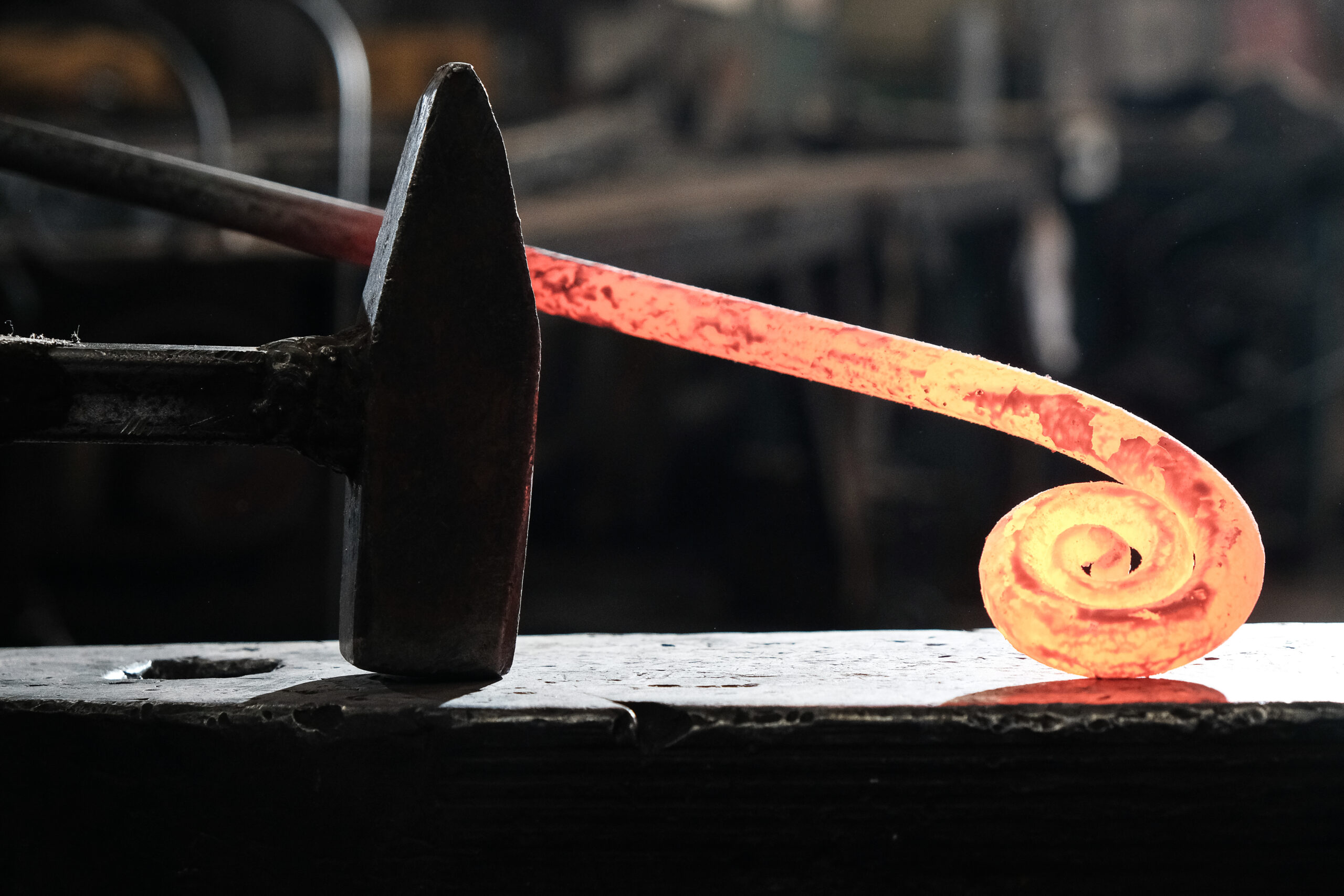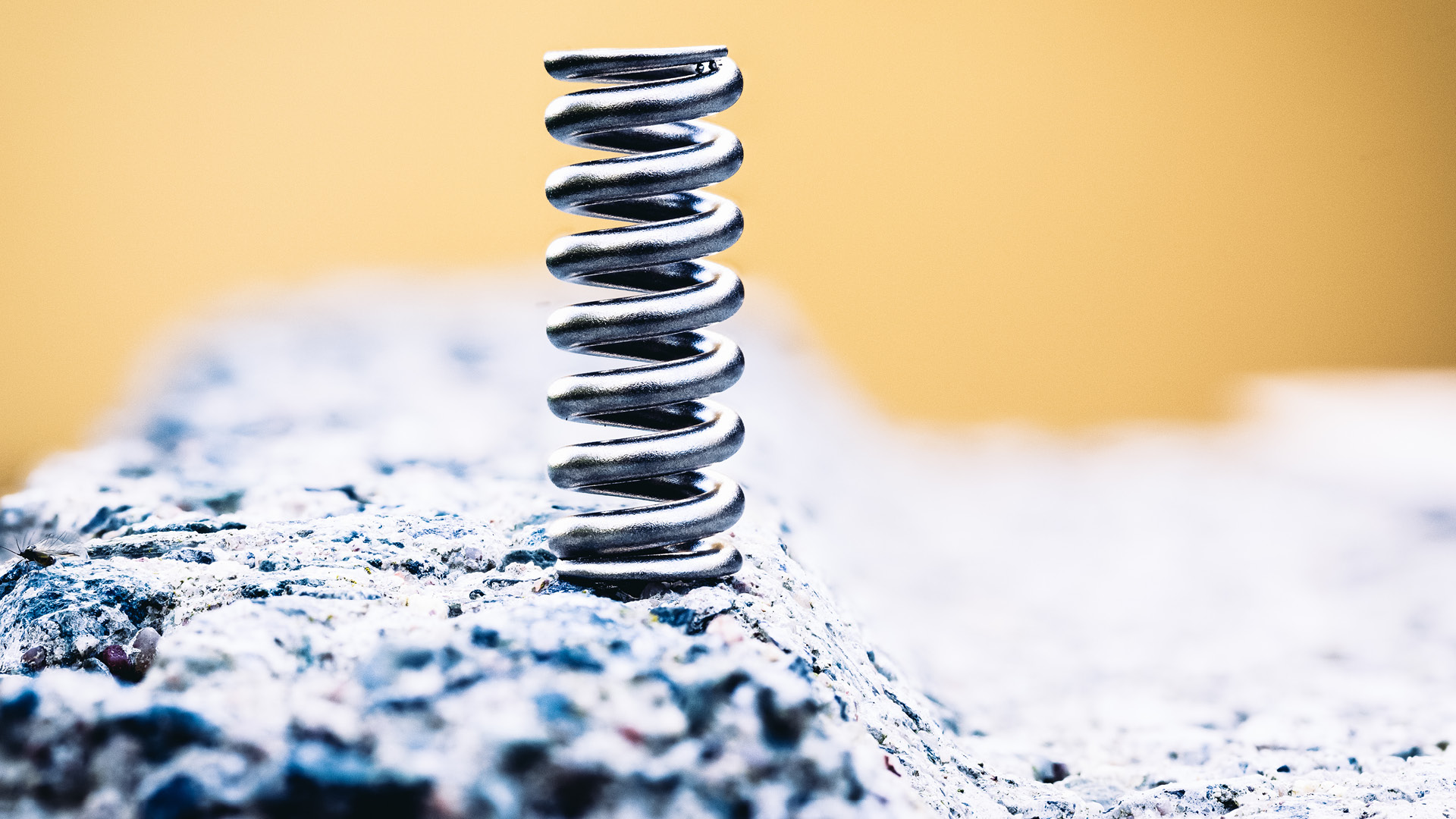
We Mettle in Heat:
A casual thought on how heat is used in spring making.
Metal is a fascinating substance. At room temperature It’s strong and hard, but also elastic and malleable. A paperclip can easily be bent into a new shape but is still strong enough to hold a stack of documents. Just the appearance of a metallic sheen catches our attention to the point where the word “shiny” has become a trope for distraction. Metal stimulates the imagination and has allowed humankind the ability to do things that would have been impossible just a few decades ago. When you allow your mind to explore the possibilities of metal thoughts of brass, bronze, silver, gold, aluminum, and steel quickly crop up. Coins, cars, bridges, skyscrapers; even spaceships and medieval armor will creep into our mind as we journey down the rabbit hole. It would take days to explore all the forms metal takes in our lives. Especially once we get into the technological and electrical realms. Each of these things are interesting and they each share a set of simple characteristics that make metal so identifiable. Metallic sheen, electrical conductivity, thermal conductivity, and ductility. In the field of spring manufacturing each of these properties must be considered carefully. Every design comes with its own challenges. We must understand the principles of our medium to meet a particular set of parameters. The product must perfectly balance those unique properties of metal in a way that makes a functional spring. One may assume it’s as simple as taking some wire and bending it into a spiral, but anyone whose twisted a paperclip around a pencil as a kid, will tell you it’s not that simple. There must be some step missing. That’s where things get truly interesting. One of the major properties of a spring that’s essential for mechanical function is the ability to “bounce” back to its original shape when its extended or compressed.
To bring out these properties in our metal we must add heat!

What do we mean when we say, “we must add heat?”
To explain this let’s continue the thought experiment and continue our mental journey. Imagine heating steel in a blacksmith’s forge. The bright reddish-orange metal can be easily shaped with hammer, and we know it will retain its shape once the steel cools. However, what’s interesting is what happens if we force the metal to cool quickly. I think everyone could identify the gratifying hiss of hot metal being plunged cold into water. The act of heating the steel slowly but cooling it quickly will imbue the metal with a particular set of characteristics. In simple terms, the reason a smith might do this is to freeze the metal into a hardened state.
This is one of the more commonly known characteristics of steel, but for those of us in the spring industry; we’re interested in what happens when we heat it just enough to make the metal change in a very particular way. A “hardened” metal will be quite brittle, and a ductile metal could be bent into a certain shape but does not have the “spring” characteristics we’re looking for. Luckily one thing we have established is that heat is essential, but the “timing” of heating and cooling is also an important factor in the finished state of the metal.

In the spring industry we heat a strong metal; usually a variation of steel; at a low temperature for a set amount of time. This heat and time combination will make our steel behave very uniquely as you might expect. It will retain characteristics from hardness as it will resist changes to shape but will still have flexibility enough not to break when stressed. This makes our metal seem to “remember” it’s shape and will “spring back” to that shape whenever it’s deformed. This is the “sweet spot” for a metallic spring and is only accomplished when we fully understand how to apply heat appropriately.
…and that’s why we Mettle in heat.
